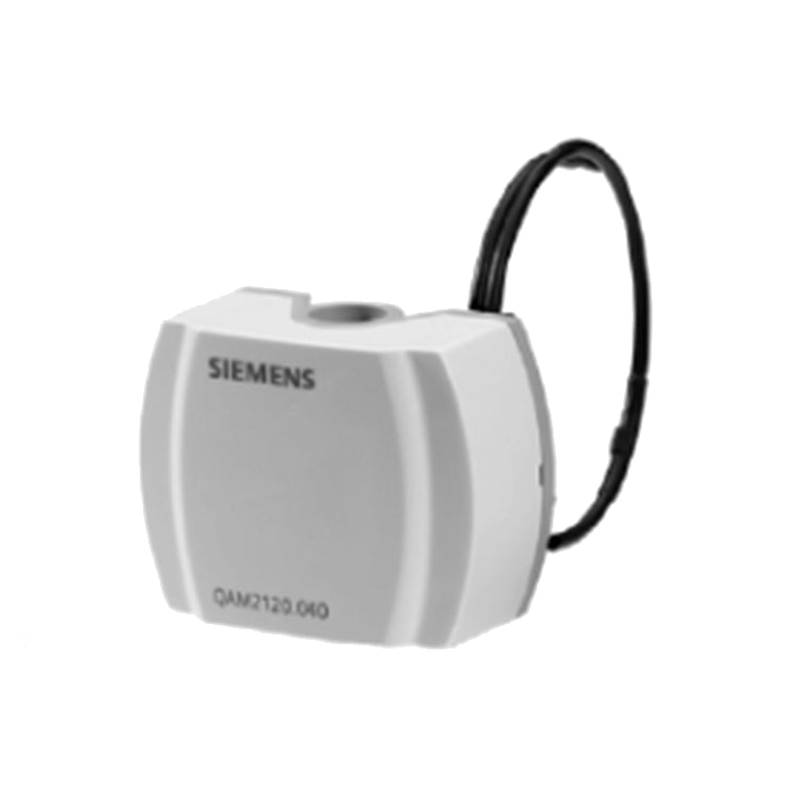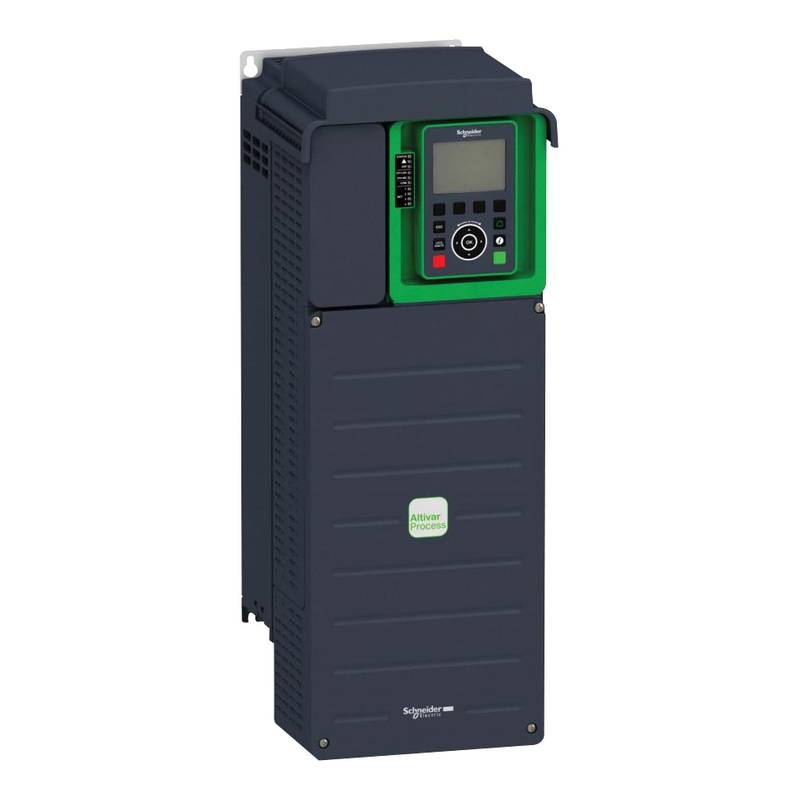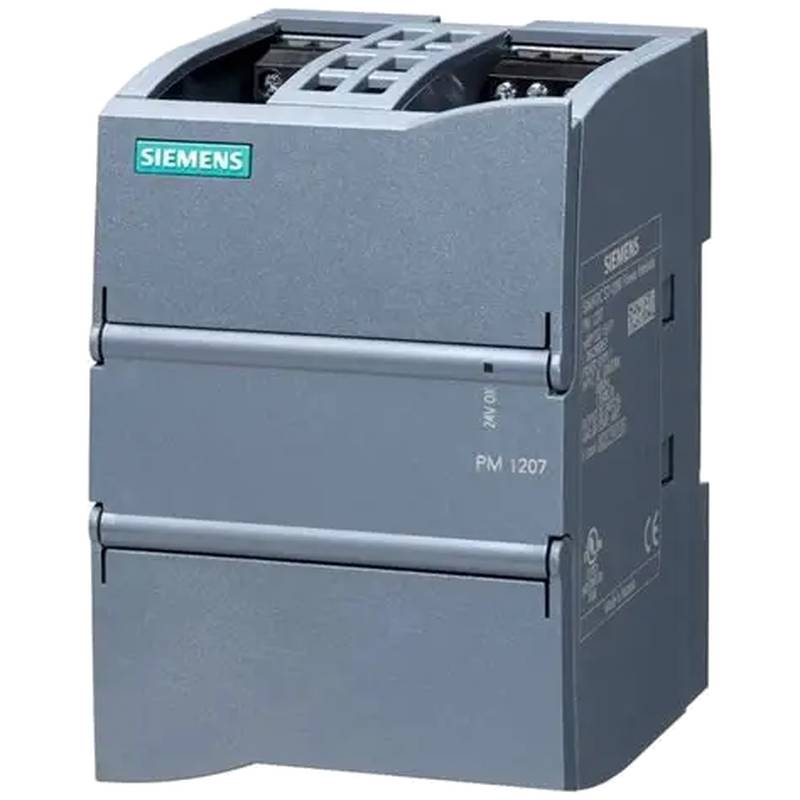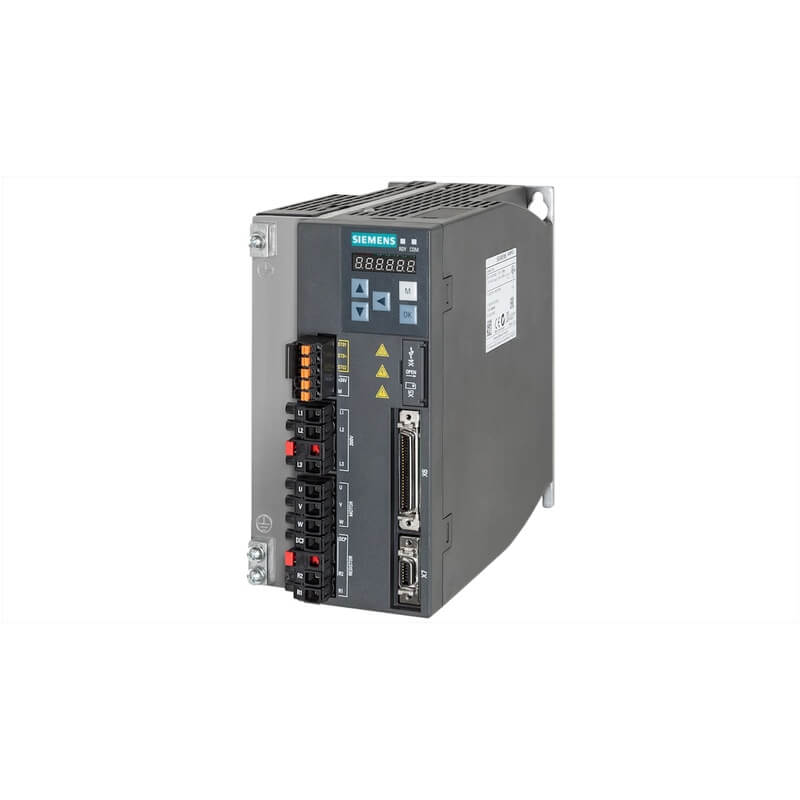
The Siemens BPZ:QAM2171.040 Pt100 temperature sensor is a highly accurate and reliable component designed for demanding industrial applications. This sensor boasts superior responsiveness and long-term stability, making it an ideal choice for precise temperature monitoring and control across various sectors. Its core advantages lie in its robust construction, high-quality platinum sensing element, and compatibility with standard industrial signal conditioning. Key technical parameters include a measurement range typically from -50°C to +250°C, a class B accuracy tolerance according to IEC 60751, a 4-wire connection for enhanced signal integrity, and a durable M12 connector for secure data transmission.
Product Specifications
| Parameter | Value |
| :---------------------- | :--------------------------- |
| Product Number | BPZ:QAM2171.040 |
| Sensing Element | Pt100 |
| Measuring Range | -50°C to +250°C |
| Accuracy Class | Class B (IEC 60751) |
| Number of Wires | 4 |
| Connection Type | M12 Connector |
| Ingress Protection | IP67 |
| Sheath Material | Stainless Steel (1.4571) |
| Response Time (T63) | < 15 seconds (in water) |
| Insulation Resistance | > 100 MΩ at 20°C (500V DC) |
| Vibration Resistance | According to IEC 60068-2-6 |
Core Features & Market Positioning
The Siemens BPZ:QAM2171.040 stands out in the competitive landscape due to its integration of a high-purity platinum element, ensuring consistent and drift-free measurements critical for process optimization and safety. Its 4-wire configuration is a significant differentiator, effectively compensating for lead wire resistance, thereby maintaining measurement accuracy even over extended cable runs. This feature is paramount in large industrial facilities where minimizing signal degradation is essential. The sensor’s market positioning is solidified by Siemens' reputation for industrial automation and its commitment to quality, offering a dependable solution that reduces downtime and enhances operational efficiency compared to less robust or less accurate alternatives.
Key Application Scenarios
This Pt100 temperature sensor finds extensive application in sectors requiring precise thermal management. It is a staple in the chemical and petrochemical industries for monitoring reactor temperatures, distillation columns, and pipeline fluid temperatures where maintaining specific process conditions is crucial for product quality and safety. In the food and beverage industry, the Siemens BPZ:QAM2171.040 is utilized for pasteurization, sterilization, and storage temperature control, ensuring product integrity and compliance with stringent hygiene standards. Furthermore, its resilience and accuracy make it suitable for HVAC systems in large commercial buildings, power generation facilities for monitoring boiler and turbine temperatures, and in water treatment plants for process control and environmental monitoring.
Practical System Integration Guidance
Integrating the Siemens BPZ:QAM2171.040 into existing control systems is straightforward due to its standard Pt100 element and M12 connector. For optimal performance, ensure the sensor is correctly positioned within the process medium to allow for accurate thermal transfer. Wiring involves connecting the four leads to a compatible temperature transmitter or PLC input module designed for 4-wire Pt100 sensors. Typically, two wires are used for current injection into the sensor, and the other two are used to measure the voltage drop across the Pt100 element, thereby eliminating lead wire resistance effects. Always refer to the specific wiring diagrams for your transmitter or PLC to ensure correct terminal assignments.
Commissioning requires verifying the sensor's resistance at a known temperature (e.g., ice bath at 0°C should read approximately 100Ω) and configuring the associated transmitter or PLC for the correct sensor type (Pt100), measurement range (-50°C to +250°C), and desired units (°C or °F). Proper configuration is essential for accurate data acquisition and control loop performance.
Operation and Risk Mitigation
Operating the Siemens BPZ:QAM2171.040 involves ensuring it remains within its specified temperature and environmental limits to prevent damage or inaccurate readings. Avoid exceeding the 250°C maximum operational temperature, as this can permanently alter the platinum element's resistance characteristics. Regular visual inspections for any physical damage to the sheath or connector can help identify potential issues before they lead to failure.
In terms of risk mitigation, the sensor's IP67 rating provides protection against dust ingress and temporary immersion in water, reducing the risk of electrical short circuits or sensor degradation in humid or wash-down environments. For applications where failure could lead to significant safety hazards or process disruptions, implementing redundant temperature measurement points or utilizing sensors with built-in diagnostics can enhance overall system reliability and safety.
Scalability & Long-Term Value
The Siemens BPZ:QAM2171.040 offers significant long-term value through its inherent durability and compatibility with a broad range of Siemens automation platforms and third-party systems. Its standard Pt100 sensing technology ensures backward compatibility and ease of integration with newer generations of PLCs and distributed control systems (DCS). For businesses looking to leverage Industry 4.0 capabilities, these sensors can be seamlessly integrated with IIoT platforms via compatible transmitters, enabling advanced data analytics, predictive maintenance, and remote monitoring.
The modular design, particularly the M12 connector, simplifies replacement or upgrades without extensive rewiring. This modularity, combined with the sensor's robust construction and Siemens' proven reliability, ensures a long operational lifespan and reduces the total cost of ownership, making it a scalable investment for evolving industrial needs.
FAQs
Q1: What is the typical accuracy of the Siemens BPZ:QAM2171.040 Pt100 sensor?
The Siemens BPZ:QAM2171.040 Pt100 sensor adheres to Class B accuracy standards as defined by IEC 60751.
This classification ensures a high degree of precision for most industrial temperature monitoring requirements.
Class B accuracy provides a reliable measurement suitable for critical process control applications.
Q2: How does the 4-wire configuration benefit this temperature sensor?
A 4-wire setup precisely measures the resistance of the Pt100 element itself.
It effectively cancels out the resistance contributed by the extension wires connecting the sensor.
This leads to highly accurate temperature readings, even over long cable distances.
Q3: What is the maximum temperature this sensor can reliably measure?
This sensor is designed for an operational temperature range up to 250 degrees Celsius.
Exceeding this limit can potentially degrade the platinum sensing element's performance.
Always ensure your application stays within this specified range for optimal longevity.
Q4: Is the Siemens BPZ:QAM2171.040 suitable for harsh industrial environments?
Yes, the sensor features an IP67 ingress protection rating for dust and water resistance.
Its stainless steel sheath (1.4571) offers excellent corrosion resistance.
It is also built to withstand vibrations as per IEC 60068-2-6 standards.
Q5: What type of connector does the BPZ:QAM2171.040 use for system integration?
This temperature sensor utilizes a standard M12 connector for electrical connection.
The M12 connector provides a robust, secure, and industry-standard interface.
This facilitates quick and reliable integration with compatible transmitters and control systems.
Q6: Can this sensor be used with any temperature transmitter?
It is best paired with transmitters designed for 4-wire Pt100 sensors for optimal accuracy.
Ensure the transmitter's input range matches the sensor's -50°C to +250°C capability.
Always consult the transmitter's manual for compatibility confirmation.
Q7: What is the response time of the Siemens BPZ:QAM2171.040?
The sensor exhibits a T63 response time of less than 15 seconds when measured in water.
This indicates a rapid capability to detect temperature changes in liquid media.
Faster response times ensure better control loop performance and process stability.
Q8: Does Siemens offer support or documentation for this specific sensor?
Yes, Siemens provides extensive technical documentation, including datasheets and manuals.
Support is available through Siemens' global network of technical service professionals.
Users can access product information via the Siemens Industry Online Support portal.
Q9: How is the Pt100 element different from other temperature sensing technologies?
Pt100 sensors use a platinum element whose electrical resistance changes predictably with temperature.
They offer excellent linearity, stability, and a wide measurement range compared to thermocouples.
The platinum material resists contamination and degradation, ensuring long-term accuracy.
Q10: What are common troubleshooting steps for a Siemens BPZ:QAM2171.040?
First, check wiring integrity and ensure the M12 connector is securely fastened.
Verify transmitter or PLC configuration for correct Pt100 type and range settings.
Measure sensor resistance directly at the connection point to rule out cable faults.

























